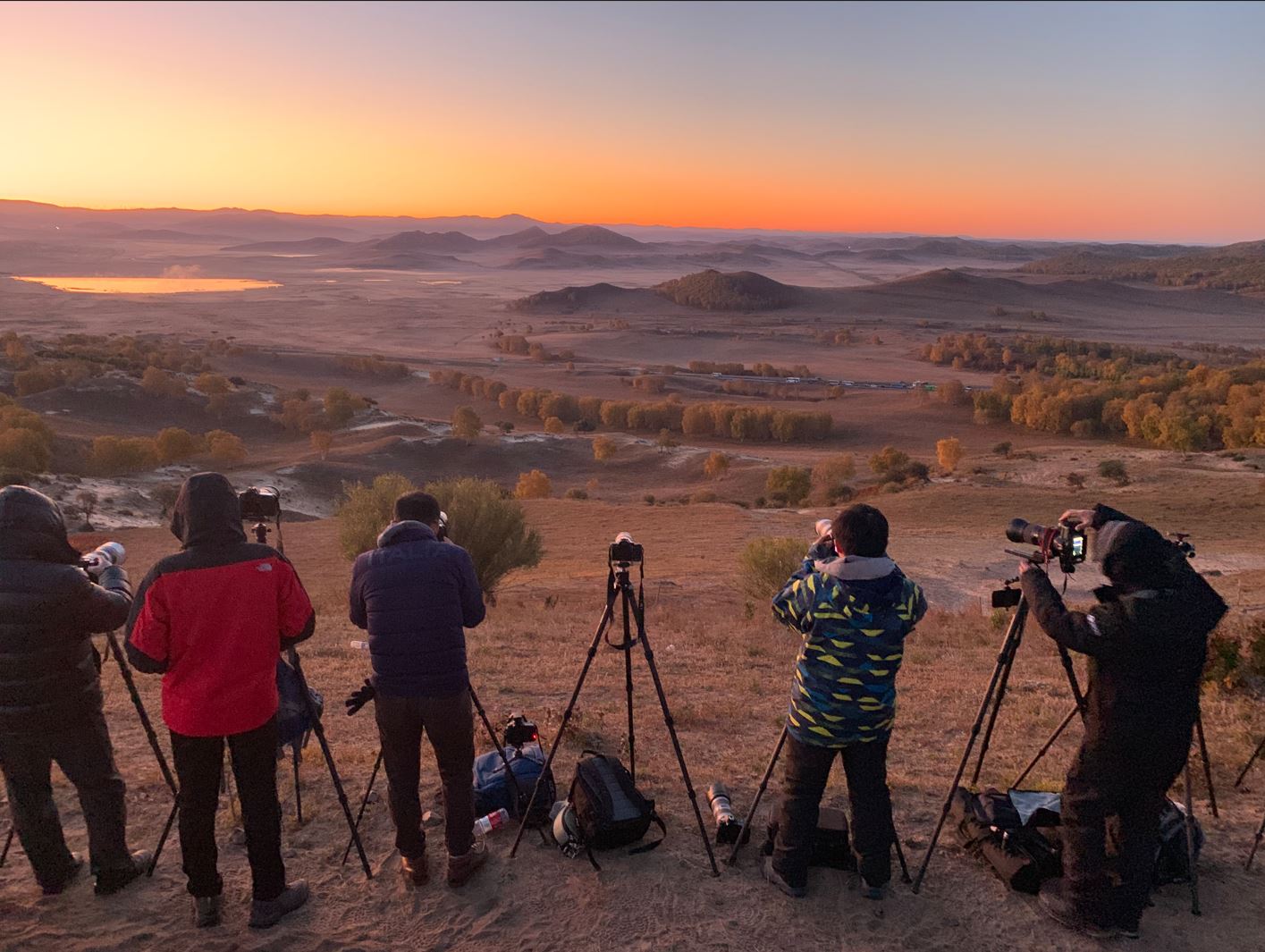
Photography is an art form that allows us to capture and preserve moments, emotions, and beauty in a visual format. Whether you want to capture stunning landscapes, document special occasions, or express your creativity, photography is an excellent medium to explore. This beginner’s guide aims to provide you with the fundamental knowledge and tips to get started on your journey to becoming a skilled photographer.
1. Understanding Your Camera:
The first step in photography is getting to know your camera. Whether you have a smartphone, a point-and-shoot camera, or a DSLR, take the time to read the manual and familiarize yourself with the different settings and features. Learn about aperture, shutter speed, ISO, and white balance – these are essential settings that directly impact the look of your photos.
2. Composition:
Composition is the arrangement of elements within your frame. It is crucial to create visually pleasing and engaging photographs. Some composition techniques include the rule of thirds, leading lines, symmetry, and framing. Experiment with these concepts to find what works best for your style.
3. Lighting:
Light is the foundation of photography. Understanding how to work with different lighting conditions will significantly impact the quality of your images. Natural light is ideal for many situations, but you should also learn how to use artificial lighting, such as flashes or studio lights, for more controlled results.
4. Focusing:
Accurate focusing is essential to ensure your subject is sharp and stands out from the background. Most cameras offer autofocus modes, but you should also learn about manual focusing for more control in challenging situations.
5. Perspective:
Experiment with different angles and perspectives to add interest to your photos. Try shooting from a low angle to make subjects look more imposing or from a higher vantage point for a unique viewpoint.
6. Post-Processing:
Editing your photos is part of the creative process. There are various post-processing software options available, such as Adobe Lightroom or Photoshop. Start with basic adjustments like exposure, contrast, and color balance, and gradually explore more advanced techniques.
7. Patience and Practice:
Photography is a skill that improves with practice. Don’t get discouraged if your early attempts don’t meet your expectations. Keep practicing, learning, and seeking inspiration from other photographers to develop your unique style.
8. Capturing Emotion:
Photography is not just about capturing technically excellent images; it’s also about conveying emotions and stories. Look for candid moments, expressions, and gestures that evoke feelings and make your photos memorable.
9. Explore Different Genres:
Try out various genres of photography to discover what resonates with you. Some popular genres include portrait, landscape, street, wildlife, and macro photography. Exploring different styles will help you find your passion.
10. Share and Seek Feedback:
Photography is a continuous journey of learning and creativity. Remember that there are no strict rules in art, so feel free to experiment and find your unique voice as a photographer. Practice, patience, and passion are key to capturing the magic in your photographs. So, pick up your camera, go out, and start capturing moments that inspire you.

1. Aperture: The opening in a camera lens that controls the amount of light entering the camera. It is measured in f-stops (e.g., f/2.8, f/5.6).
2. Shutter Speed: The amount of time the camera’s shutter remains open to expose the image sensor to light. It is measured in seconds or fractions of a second (e.g., 1/1000, 1/60).
3. ISO: A measurement of the camera sensor’s sensitivity to light. Higher ISO values are used in low-light situations but can introduce digital noise in the image.
4. Exposure: The amount of light that reaches the camera sensor, determined by the combination of aperture, shutter speed, and ISO settings.
5. Depth of Field (DOF): The range of distance in a photograph that appears sharp. A shallow DOF results in a blurred background, while a deep DOF keeps more of the image in focus.
6. Shutter Release: The button or mechanism used to take a photograph.
7. White Balance: Adjusting the color temperature of a photograph to match the ambient lighting conditions, ensuring accurate color reproduction.
8. RAW: An uncompressed file format that stores all the data captured by the camera’s sensor, allowing for more extensive post-processing.
9. JPEG: A compressed image format commonly used for sharing and displaying photos, with some loss of image quality.
10. Composition: The arrangement of elements within the frame to create a visually appealing photograph.
11. Rule of Thirds: A compositional guideline dividing the frame into nine equal parts, with important elements placed along the lines or at their intersections.
12. Histogram: A graphical representation of the distribution of tones in an image, helping to analyze exposure.
13. Bokeh: The aesthetic quality of the out-of-focus areas in an image, often achieved with a wide aperture.
14. Exposure Compensation: Adjusting the exposure from the camera’s metered reading to make the image brighter or darker.
15. Focal Length: The distance between the lens and the camera sensor, determining the angle of view and magnification.
16. Zoom: Adjusting the focal length of a zoom lens to bring the subject closer or move further away.
17. Prime Lens: A lens with a fixed focal length, offering sharper images and wider apertures compared to zoom lenses.
18. DSLR: Digital Single-Lens Reflex camera, a type of camera that uses a mirror and prism system to direct light from the lens to the optical viewfinder.
19. Mirrorless Camera: A type of camera that lacks a mirror system and uses an electronic viewfinder or the rear LCD to compose images.
20. Tripod: A three-legged support used to stabilize the camera during long exposures or when a steady shot is required.
21. ND Filter: Neutral Density filter, used to reduce the amount of light entering the camera without affecting color balance, allowing for longer exposures or larger apertures in bright conditions.
22. Histogram: A graphical representation of the tonal distribution in an image, from shadows on the left to highlights on the right.
Taking better photos with a smartphone can be a lot of fun and rewarding. Here are 30 tips to help you capture stunning images:
1. Clean the lens: Before you start shooting, wipe the lens with a soft cloth to remove any smudges or dirt that may affect image quality.
2. Use natural light: Opt for natural light whenever possible, as it tends to produce more flattering and vibrant photos.
3. Avoid using the digital zoom: Instead, get closer to your subject physically to maintain image quality.
4. Gridlines: Enable gridlines in your camera settings to help you compose your shots better using the rule of thirds.
5. Rule of thirds: Place your subject along the gridlines or at the points where they intersect to create a more balanced and visually appealing composition.
6. Find interesting angles: Experiment with shooting from different angles and heights to add creativity and uniqueness to your photos.
7. HDR mode: In high-contrast situations, use HDR mode to capture better details in both bright and shadowed areas.
8. Focus and exposure: Tap on your subject to focus and adjust the exposure manually if needed.
9. Use burst mode: Capture fast-moving subjects or group shots by using the burst mode feature.
10. Portrait mode: Use portrait mode to create a shallow depth of field and blur the background, making your subject stand out.
11. Keep it steady: Avoid camera shake by holding your phone with both hands or use a mini tripod for more stable shots.
12. Use leading lines: Look for lines in your environment like roads, fences, or pathways that can lead the viewer’s eye to your subject.
13. Avoid using the flash: Natural light is usually more flattering than the harsh light produced by the smartphone flash.
14. Edit sparingly: Enhance your photos with editing apps but avoid excessive filters or adjustments that can make them look unnatural.
15. Use the exposure lock: On some smartphones, you can lock the exposure by holding down on the screen. This helps maintain consistent lighting when you recompose your shot.
16. Include negative space: Leave some empty space around your subject to add emphasis and simplicity to your composition.
17. Capture candid moments: Candid shots often convey genuine emotions and create more engaging photos.
18. Use the timer: When you’re in the frame, use the timer to avoid shaky selfies.
19. Play with reflections: Look for reflective surfaces like water or glass to add an interesting element to your photos.
20. Shoot during the golden hour: Take advantage of the soft, warm light during sunrise or sunset for captivating photos.
21. Experiment with panorama mode: Use panorama mode to capture breathtaking wide-angle landscapes.
22. Avoid using digital zoom: Instead, crop the photo later in post-processing to maintain image quality.
23. Try different photo apps: Explore third-party camera apps that offer advanced features and manual controls for more control over your shots.
24. Use the built-in editing tools: Many smartphones have basic editing tools built into their camera apps. Utilize them to fine-tune your photos before sharing.

25. Use the native camera app: Whenever possible, use your phone’s native camera app, as it is often optimized for your specific device.
26. Keep your lens clean: Carry a lens cleaning cloth with you to ensure your lens is free from smudges and fingerprints.
27. Shoot in RAW format: If your smartphone supports it, shoot in RAW format to have more flexibility in post-processing.
28. Avoid overexposure: Ensure your highlights aren’t blown out by adjusting the exposure or using HDR mode.
29. Frame your subject: Use elements in the environment to frame your subject and draw attention to it.
30. Practice, practice, practice: Like any skill, photography improves with practice. So, keep taking photos regularly to hone your skills and creativity.
Related Posts
Video Making 101: A Beginner's Guide to Getting StartedVideo making can be a fun and rewarding creative pursuit. Whether you want to make videos for personal enjoyment, social media, or even a potential career, this beginner's guide will help you get started on the right foot. Let's break it down into steps: 1. Define Your Purpose: - Decide what type of videos you want to create (e.g., vlogs, tutorials, travel videos, storytelling, etc.). - Determine your target audience and what message you want to convey. 2. Plan Your Content: - Outline the structure of your video, including the introduction, main content, and conclusion. - Create a script or a rough outline to guide your filming and ensure you cover all important points. 3. Choose Your Equipment: - Smartphones: For basic videos, modern smartphones can work well with their built-in cameras. - Cameras: If you want higher quality, consider a DSLR, mirrorless camera, or camcorder. - Audio: Invest in…
Travel Photography: Documenting Adventures and DestinationsTravel photography is a fascinating and rewarding way to document your adventures and capture the beauty of various destinations around the world. Whether you're an amateur or a professional photographer, here are some tips to help you create compelling travel photographs: 1. Plan Ahead: Research your destination before you travel. Learn about the best photography spots, cultural norms, and local events that could provide interesting photo opportunities. 2. Pack Light: Traveling with heavy photography gear can be cumbersome. Choose a versatile camera body and a few essential lenses to cover a wide range of situations. Consider a lightweight tripod for stability. 3. Capture Local Culture: Aside from landscapes, focus on photographing people, local traditions, and unique customs to tell a more comprehensive story of your destination. 4. Use the Golden Hours: Take advantage of the soft, warm light during sunrise and sunset, known as the golden hours. The lighting during…
Improving Your Drone Photography: Tips for Stunning Aerial ShotsDrone photography offers a unique perspective, capturing breathtaking aerial views and creating stunning visual storytelling. Whether you're an amateur or professional drone photographer, there's always room for improvement to take your shots to new heights. Here are some tips to enhance your drone photography skills: 1. Know Your Drone: Familiarize yourself with the features and capabilities of your drone. Understand its flight modes, camera settings, and any limitations it may have. Regularly update the firmware for optimal performance. 2. Practice Your Flying Skills: Flying a drone smoothly and confidently is crucial for getting great shots. Practice flying in open spaces, away from obstacles, and in different weather conditions to build your flying skills. 3. Compose with Purpose: Treat your drone shots like any other photograph. Pay attention to composition rules such as the rule of thirds, leading lines, and symmetry. Compose your shots with purpose to create visually appealing images.…
Chasing the Northern Lights: Embracing the Arctic MagicChasing the Northern Lights is an exhilarating and awe-inspiring experience, allowing you to immerse yourself in the enchanting beauty of the Arctic magic. The Northern Lights, also known as the Aurora Borealis, are a natural phenomenon that occurs in high-latitude regions near the Arctic Circle, such as Norway, Sweden, Finland, Iceland, Canada, and Alaska. This stunning display of lights is caused by the collision of charged particles from the sun with the Earth's atmosphere, creating mesmerizing colors dancing across the night sky. To embark on your journey of embracing the Arctic magic and witnessing the Northern Lights, here are some essential tips: 1. Choose the right time and location: Plan your trip during the winter months (September to April) when the nights are longer and darker, providing better opportunities to see the Northern Lights. Select a location away from light pollution, ideally in remote areas or national parks, to enhance…
Guide to Taking Care of Smooth and Curly HairHaving a combination of smooth and curly hair can be a blessing and a challenge. Each hair type requires different care and attention to maintain its health and beauty. In this comprehensive guide, we'll explore the essential tips and techniques to care for both smooth and curly hair, helping you embrace the unique beauty of your locks and keep them looking fabulous. 1. Know Your Hair Type Understanding your hair type is the first step in developing an effective hair care routine. Identify the areas where your hair is smooth and where it becomes curly or wavy. This knowledge will help you tailor your care to each section appropriately. 2. Use a Suitable Shampoo and Conditioner Invest in a shampoo and conditioner designed for your hair type. For smooth sections, look for products that promote shine and hydration without weighing the hair down. For curly areas, opt for moisturizing and…
Crafting Timeless Elegance: A Guide to Choosing Handmade JewelryHandmade jewelry exudes a unique charm and allure that sets it apart from mass-produced pieces. Each handcrafted item carries the artisan's passion, creativity, and dedication, making it a special and meaningful addition to your collection. However, selecting the perfect handmade jewelry piece can be an enriching yet overwhelming experience. In this article, we'll guide you through the process of choosing handmade jewelry that complements your style and captures the essence of craftsmanship. 1. Discover Your Personal Style Before embarking on your quest for the perfect handmade jewelry, take a moment to understand your personal style. Are you drawn to minimalistic designs, bohemian aesthetics, or vintage-inspired pieces? Knowing your style preferences will help narrow down your choices and make the selection process more enjoyable. 2. Seek Quality Craftsmanship Handmade jewelry is a testament to the artisan's skill and artistry. When choosing a piece, look for exceptional craftsmanship that showcases attention to…
The Ultimate Guide to Weight Loss: Tips and StrategiesLosing weight requires a combination of healthy eating habits, regular physical activity, and lifestyle adjustments. Here's a comprehensive guide with tips and strategies to help you achieve your weight loss goals: 1. Set Realistic Goals: Establish achievable and measurable weight loss goals. Aim for steady progress rather than quick fixes, as sustainable weight loss is a gradual process. 2. Consult a Healthcare Professional: Before starting any weight loss program, consult your doctor or a registered dietitian to ensure your plan is safe and appropriate for your individual needs. 3. Create a Calorie Deficit: Weight loss occurs when you burn more calories than you consume. Calculate your daily caloric needs and aim to eat fewer calories than your body burns. 4. Balanced Diet: Focus on a balanced diet that includes a variety of nutrient-dense foods such as fruits, vegetables, whole grains, lean proteins, and healthy fats. 5. Portion Control: Be mindful…
Stepping in Style: A Guide to Selecting Chic Boots for WomenBoots are a timeless and versatile footwear choice that can instantly elevate any outfit, adding a touch of sophistication and style. From classic ankle boots to knee-high stunners, there's a boot style to suit every woman's taste and personality. In this guide, we'll walk you through the key factors to consider when selecting stylish boots for women, ensuring you step out in fashion-forward footwear that makes a statement. 1. Know Your Style Preferences Before diving into the world of boots, consider your style preferences. Are you drawn to classic and timeless designs, or do you prefer trendy and bold styles? Understanding your style preferences will help you narrow down your options. 2. Choose the Right Boot Height Boots come in various heights, including ankle, calf, knee-high, and over-the-knee. Select a height that complements your body type and the outfits you plan to wear with them. 3. Consider Your Comfort Level…
Step-by-Step Guide to Achieving Your Fitness GoalsSetting fitness goals is a powerful step towards transforming your health and well-being. Whether you aspire to lose weight, build strength, run a marathon, or simply lead a more active lifestyle, having a clear vision and a well-defined plan is essential for success. In this comprehensive guide, we'll walk you through the key steps to help you achieve your fitness goals and unlock the best version of yourself. 1. Set Specific Goals: Define your fitness objectives with clarity. Whether it's running a certain distance, lifting a specific weight, or improving your endurance, setting specific goals provides focus and direction. 2. Make Your Goals Realistic: While it's great to aim high, ensure that your goals are attainable within a reasonable timeframe. Unrealistic targets can lead to disappointment and demotivation. 3. Break Down Your Goals: Divide your long-term goals into smaller, manageable milestones. Celebrating these small victories will keep you motivated and…
Choosing the Best Lawyer for Your Legal Needs: A Comprehensive GuideWhen facing legal issues, finding the right lawyer is crucial to ensure the best possible outcome for your case. However, with so many lawyers practicing in various areas of law, selecting the best one for your specific needs can be a daunting task. In this article, we'll provide a comprehensive guide on how to choose the best lawyer to represent you effectively and professionally. 1. Determine Your Legal Needs Before searching for a lawyer, identify your specific legal needs. Different lawyers specialize in various areas of law, such as family law, personal injury, criminal defense, business law, or estate planning. Knowing the type of legal assistance you require will help you narrow down your search. 2. Research and Referrals Start by conducting thorough research on lawyers in your area who specialize in the relevant field of law. Read reviews, check their qualifications, and assess their experience. Additionally, seek referrals from…



